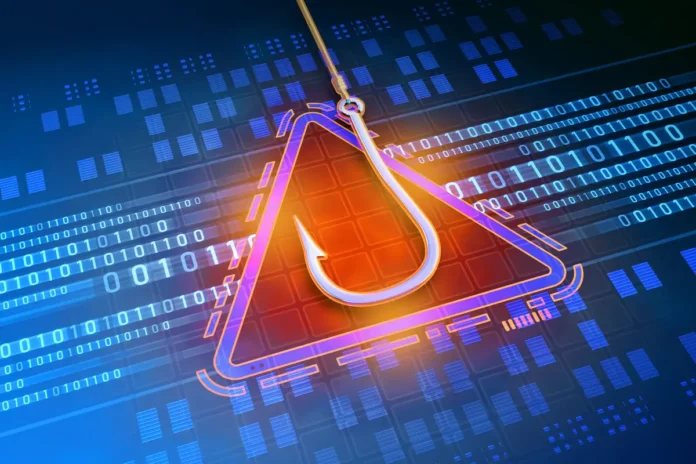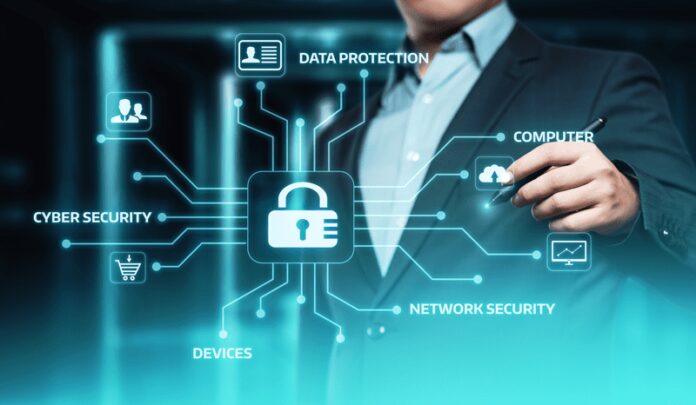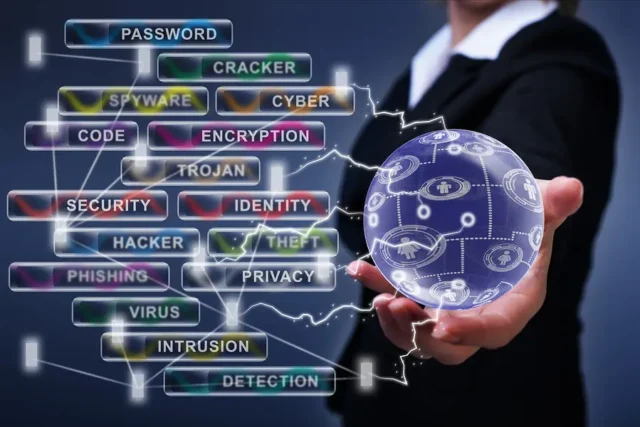Cyberattacks pose a constant danger today. In the past few years, hackers have launched more than a million cyberattacks per day to steal personal data, such as passwords and bank account details. The average consumer may not be aware of this constant threat, but businesses are increasingly becoming a target for criminals. The average enterprise is now subject to cyberattacks. Companies that have access to sensitive data or hold financial information could be vulnerable to identity theft, ransomware, or other cybercrimes.
Cyber Threat

Cyber threats are attacks launched through the Internet, which use technology, tactics, and information to cause damage or gain access to sensitive data. Cyber threats can be categorized as either E-threats or I-threats. E-threats include specific threats, such as cyberattacks on organizations and the theft of economic data, while I-threats include threats to individuals, such as identity theft and online fraud.
Cyber threats can be classified by their methods of execution, their targets, and their types. While cyber threats are constantly evolving, specific strategies and targets remain consistent, meaning that businesses can start to protect themselves even before the danger is known.
Cyber Threat Scanning
Cyber threats are often detected by security firms and auditors using scanning tools. Scanning is an automated process that looks for abnormal behavior, such as unusual network traffic or alterations to the network configuration. Security scanners are also set to look for specific types of activity, such as an attempt to steal data or to access an application that holds sensitive data. Scanning also allows businesses to find threats that human eyes may have missed.
However, even with the best scanning tools and practices, cyber threats can be hard to stop. Threats are constantly evolving, and new variations of known ones appear daily.
Identity Theft
One of the common forms of cybercrime is identity theft. It occurs when a third party uses their victim’s data without knowledge to commit fraud. It can happen in various ways, including when personal information is stolen through a data breach or by someone who has access to personal data physically or online. Identity theft can be challenging to detect, and victims may not even realize they’ve been affected. This can significantly impact their financial well-being, such as when someone opens a fraudulent account in their name, takes out a loan, or leverages their social security number to get a job. Identity theft is a significant concern, and it can have a considerable impact. To prevent identity theft, be cautious when sharing information, avoid carrying sensitive documents in public, and regularly monitor the credit reports.
Ransomware

Ransomware is malware that encrypts data and requires the victim to pay a ransom to unencrypt it. It’s most commonly used to extort business owners. To prevent an attack, always back up data regularly and protect it with strong passwords. If data become infected with ransomware, restore the data from backup and remove the malware as soon as possible.
Internet Fraud
Internet fraud, such as online shopping and banking fraud, is another cybercrime type. Internet shopping fraud can come from several sources, such as price-fixing among online retailers or an ad that redirects users to a scam site. Online banking fraud is even more widespread, and it occurs whenever someone uses your personal information to withdraw money from an account. To avoid this type of threat, ensure to use strong passwords and don’t reveal too much information when using online services. Monitor your financial activity regularly, and report any suspicious activity to your bank or credit card company immediately.
Distributed Denial of Service-DDoS Attacks
This attack happens when a hacker uses multiple computers to attack a target’s system. They do this by using a botnet, a group of computers hacked and controlled by a botnet creator. DDoS attacks happen when someone sends as many data packets as possible to a target’s computer.
This type of crime often happens anonymously, making it difficult to know who is attacking your computer. It can also be challenging to recognize a DDoS attack because there are many different ways it can be done.
Phishing

Phishing is another online threat. It occurs when criminals send out emails or social media messages that look like they’re from a trustworthy source. These messages may lead to malicious websites that try to steal passwords and other personal information.
There are many different types of phishing emails. The most common are fake invoices, fake invoices with attached documents, and scam lottery offer emails. Other phishing emails mimic emails from banks, Paypal, and other reputable companies.
Stealing Credit Card Information
Credit card fraud is a significant problem that plagues both businesses and consumers. Credit card theft can happen when scanning a magnetic stripe card at a store, when logging into a website that requires credit card information, making payments with a credit card, or when used to pay someone else.
Card information is one of the most vulnerable parts of a digital ecosystem. While consumers are becoming more aware of the risks associated with digital information, businesses are taking action in response to the threat. Credit card organizations have been taking steps to combat credit card theft by installing protective layers on credit card transactions. Businesses may also offer secure digital payment options, like software with end-to-end encryption.
How to Protect Companies against Cyber Threats
Primarily, companies should invest in security controls, which can also be administered by a managed IT services provider. These include policies and procedures, such as passwords and private keys, and hardware and software controls, such as encryption and firewalls.
Additionally, companies should be aware of the threat landscape and the popular attack vectors.
Why Customers Would Sue Businesses Over IT Security

If you don’t have the right business IT Security set up, you could find yourself in a situation where a customer sues you for not protecting their data.
There are two primary reasons customers can sue businesses for not having proper security. The first is that customers want to be sure that their information is protected. If a company is hacked, the customers’ information could be at risk.
The second reason customers sue businesses is that they feel the company didn’t take their security concerns seriously. Customers think that a company should make a reasonable faith effort to protect their information. Still, if the company isn’t willing to make changes, the customer feels that it’s appropriate to file a lawsuit.
Risk of Being Sued Over IT Security
The risk of being sued over broken IT Security is relatively low, but it’s there, and it’s something to be aware of to protect your business from it. Customers can sue enterprises, but they also have to prove that the company was at fault somehow.
How to Protect Your Business From The Risk of Being Sued Over IT Security
The best way to protect your business from the risk of being sued by a customer is to make sure that you’re doing everything you can to safeguard their information from being stolen. This includes ensuring integrity controls are in place and regularly backing up data. Organizations should also consider hiring an outside consultant to conduct a security audit on their security controls and practices.
Conclusion
Cyber threats are constantly evolving and can significantly impact businesses. There are plenty of ways for a hacker to access sensitive information, particularly when it comes to data that is stored online. By understanding how attackers operate and the popular types of threats, companies can better protect themselves from cyber threats. Cyber security can be achieved by investing in security controls and tracking the threat landscape.




